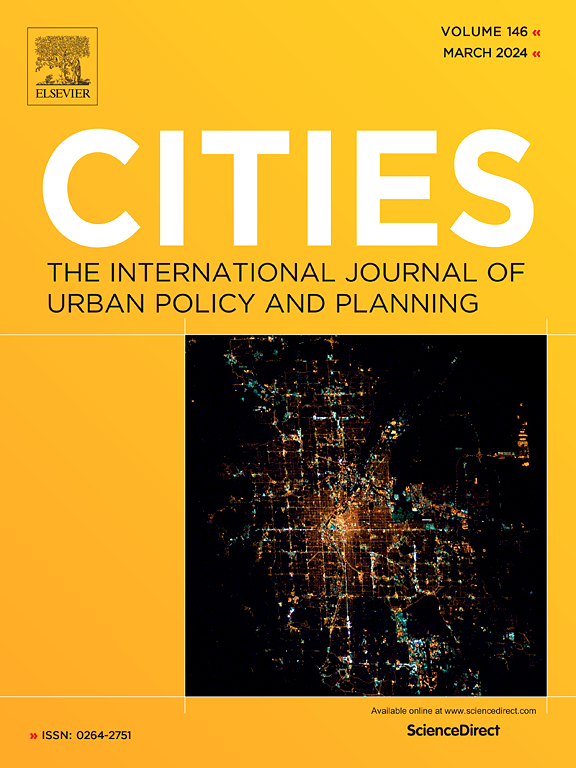宫殿大门和乙烯基房屋:首尔的城市符号学和有争议的身份
IF 6.6
1区 经济学
Q1 URBAN STUDIES
引用次数: 0
摘要
首尔向国民展示了韩流流行文化和具有吸引力的购物、娱乐场所的目的地形象。它建立在城市规划者和政策制定者的观点之上,即一个原始的现代形象将有利于旅游业,无论这个行业对经济是否有重大贡献。在更深层次上,城市的真实和有争议的身份体现在某些其他特征中,如历史纪念碑点缀着建筑景观,以及周边不可避免的贫民窟。本研究的目的是揭示城市环境中遗产纪念碑和贫民窟之间的对应点。为了实现这一目标,采用社会结构符号学方法来探索和对比光化门和九龙贫民窟作为城市身份的同义表现的外延和内涵方面。研究结果表明,这两种表征的永久短暂性以不同的方式表现出来。对纪念性大门的修改得到了公众的批准,但贫民窟的身份和乙烯基房屋的解决方案是不透明的。政策上存在一些问题,一些人可能会主张通过旅游业来实现贫民窟的增值,而另一些人则认识到游客偷窥与居民同意的阴暗面,以及商品化的复杂性。本文章由计算机程序翻译,如有差异,请以英文原文为准。

Palace gate and vinyl houses: Urban semiotics and contested identity in Seoul
Seoul projects a destination image of Hallyu pop culture and attractive shopping and entertainment zones to the public. It is built on urban planners' and policy makers' views that a pristine modern image will be good for tourism whether this industry contributes significantly to the economy or not. On a deeper level the city's very real and contested identity is found in certain other features such as historical monuments punctuating the built landscape, and the inevitable slum at the periphery. The aim of this study is to reveal the counterpoint between heritage monuments and the slum in this urban environment. To achieve this goal, a social-structural semiotic method is employed to explore and contrast the denotative and connotative aspects of Gwanghwamun Gate and the Guryong slum as synecdochical representations of urban identity. Findings indicate the permanent transiency of these two representations manifest in different ways. Revisions to the monumental gate are publicly approved, but solutions to the identity of the slum and its vinyl houses are opaque. There are problems in policy where some might argue for valorization of the slum through tourism, while others recognize the darker aspects of tourist voyeurism versus residents' consent, and the complexities of commoditization.
求助全文
通过发布文献求助,成功后即可免费获取论文全文。
去求助
来源期刊

Cities
URBAN STUDIES-
CiteScore
11.20
自引率
9.00%
发文量
517
期刊介绍:
Cities offers a comprehensive range of articles on all aspects of urban policy. It provides an international and interdisciplinary platform for the exchange of ideas and information between urban planners and policy makers from national and local government, non-government organizations, academia and consultancy. The primary aims of the journal are to analyse and assess past and present urban development and management as a reflection of effective, ineffective and non-existent planning policies; and the promotion of the implementation of appropriate urban policies in both the developed and the developing world.
 求助内容:
求助内容: 应助结果提醒方式:
应助结果提醒方式:


